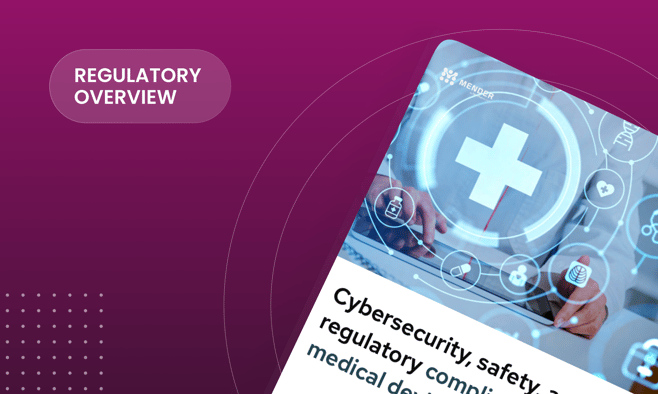Table of contents
|
THE CUSTOMER
|
Environmental Services, Oil & Gas | United States & Canada www.kuvasystems.com |
Making the invisible measurable – and thereby, manageable.
Kuva Systems features a low-cost camera that pinpoints methane release locations and quantifies flow rates based on cost-effective minute-by-minute measurements. Leak analytics can be used to prioritize operational responses, quantify ongoing conditions, and confirm nominal performance. Offering a fully automated, image-based, continuous methane monitoring and quantification solution, Kuva Systems enables upstream and midstream oil and gas companies to meet ESG and methane intensity goals while optimizing operational processes.
|
of GHG from methane |
Imaging cameras in a typical O&G operation |
Key Benefits
| Accelerated imaging camera improvements leveraging a purpose-built solution | |
| Enhanced ability to remediate issues quickly via remote terminal and troubleshooting | |
| Saved thousands of dollars limiting expensive, onsite visits to remote locations | |
| Reduced cellular data transmission bandwidth costs, optimizing edge data processing | |
| Enabled remote debugging of the whole software system on thermal cameras | |
| Optimized operations by asynchronously updating all applications with Azure IoT Hub |
The Challenge
Four Keys to Manage Innovative Edge Cameras
| Reduce costs and increase agility by leveraging secure and robust OTA software updates | |
| Accelerate device troubleshooting and remediation by gaining visibility on the whole state of software on each device | |
| Optimize operations leverage remote capabilities and eliminate onsite requirements | |
| Manage processing requirements and data transfer overhead |
The Challenge
Managing innovative edge cameras to reduce greenhouse gas emissions
Methane is the second most abundant anthropogenic greenhouse gas (GHG), accounting for about 20% of global emissions. While second in abundance to carbon dioxide (CO2), methane is over 25 times more capable than carbon dioxide at trapping heat in the atmosphere. With its relatively short atmosphere lifecycle – only 27 years – combined with its abundance, methane is a good target for global warming emission reduction. Addressing rogue methane emissions from industrial operations is one of the most cost-effective methods to tackle climate change. However, up to this point, methane emissions generated by oil and gas operations have proved difficult to monitor. Today, monitoring technology now exists to monitor and measure methane emissions at upstream and midstream oil and gas facilities.
The Kuva Gas Imaging Camera contains an infrared sensor that looks at changes in the spectrum, scanning the air and sunlight bouncing into the camera. Using a method known as spectroscopic absorption, the camera calculates the number of methane molecules and other volatile organic compounds (VOCs) between the camera and the reflected sunlight. The Kuva Gas Imaging Camera generates an image and overlays a colorized plume of the gas, depicting its movement and identifying its source so that the emissions can be curtailed.
The Kuva solution also eliminates costly false alarms and expedites the leak repair process as its imaging technology and emissions data correlated with operational process data help identify the root cause of the leak. An economical, environmental solution that is easy to deploy across facilities and remote locations, the Kuva Gas Imaging Camera promises to be a disruptive technology for the industry and future climate change fight.
A typical oil and gas midstream operation contains one to five Kuva Gas Imaging Cameras to monitor and measure methane emissions. The number of cameras depends on the size of the site; many upstream sites require only one, while some mega-sites have numerous cameras installed. Cameras are mounted in various locations across the facilities, typically at higher elevations for greater vantage points, to capture various potential methane emission points. While efficient at monitoring methane emissions, the Kuva Gas Imaging Cameras originally required onsite technicians to deploy software updates. Each time a software update was ready, technicians manually detached the cameras from poles and updated each device with a USB drive – an inefficient and costly process
for Kuva Systems.
Managing and troubleshooting the cameras also posed a challenge for the engineering team. When an issue with a camera surfaced, the engineering team
had difficulty gaining visibility on everything around the application layer. The lack
of visibility on the whole state of the software system in the camera made troubleshooting and remediating issues difficult.
As edge devices are often at remote locations, managing computing and data processing costs is critical to ensure efficient, optimal operations. In this environment, cloud processing isn’t desirable, but it’s equally important to optimize data processing at the edge and minimize data transfer costs.
OTA Software Update Solution Technical Requirements
| Deploy completely over-the-air software updates | |
| Utilize the Yocto Embedded Linux device operating system | |
| Support Azure IoT Edge for runtime applications | |
| Integrate with Azure IoT Hub to manage application updates | |
| Implement fail-safe design with a rollback capability | |
| Manage a device fleet at scale easily | |
| Minimize the bandwidth costs of deploying updates over cellular networks |
The Solution
Leveraging secure over-the-air (OTA) software updates and remote device troubleshooting
With devices operating in remote, risk-sensitive environments, Kuva selected Mender for secure and robust over-the-air (OTA) software updates. The robustness provided by Mender, such as its fail-safe design, ensured Kuva Gas Imaging Cameras were never left nonoperational and continued to function properly even if a backup failed. Mender’s security-by-design approach gave the Kuva team assurance that updates would be securely and safely deployed to the camera, minimizing cyber risks from adversaries or unauthorized use.
Mender empowers the Kuva team to centrally manage software deployments to their camera fleet at ease, deploying full root filesystem (fs) and incremental application updates, bug fixes, and security vulnerability patches. Deploying completely over the air allows Kuva to reallocate its resources, removing the need to send technicians onsite to deploy updates.
Enhancing Mender with the Troubleshoot Add-on also supports the embedded software engineering team to remotely debug and troubleshoot software across camera systems, including Yocto Embedded Linux with Azure IoT Edge and IoT Hub. The ability to leverage secure remote terminals to the shell of the device further means the engineering team can inspect and troubleshoot devices, monitor and review access logs, and even track user activity on the device.
“100% over-the-air updates are really a game changer for us in terms of the ability to improve and fix issues quickly without spending thousands of dollars to send people to troubleshoot in remote locations.”
- Sean Weiss, VP of Software Engineering
Operating as an industrial IoT device with edge analytics requires the camera to perform calculations and processes in the field. Since cloud processing was not desirable, the Kuva Gas Imaging Camera transmits data over cellular connectivity or local ethernet. As such, it is essential to minimize data transfer costs by optimizing processes at the edge. Leveraging Mender’s delta updates reduced the size of each deployment, empowering Kuva to minimize bandwidth costs and optimize overall operations. Edge applications on the devices required frequent updates with machine learning (ML) algorithm enhancements. The compatibility between the Azure layer and Mender also helps Kuva leverage Azure for updating all applications asynchronously via the Azure IoT Hub.
The Mender Difference
|
Ease of technical evaluation, setup, implementation, and deployment | Advanced remote terminal for understanding and remediating issues | |
|
|
Intuitive interface for troubleshooting remote devices |
|
Built-in multi-level security and fail-safe design |
Technology Ecosystem
| Linux custom boards | |
| Linux Yocto OS | |
| Azure IoT Hub | |
| Azure IoT Edge |
The Benefits
Benefits
Accelerated innovation and optimized operations with embedded security throughout
Optimized device updates and management. With Mender, the Kuva team can now update the Kuva Gas Imaging Cameras completely over the air, saving thousands of dollars in onsite technician updates. The Kuva team also reduced support costs and accelerated the time to resolution for issues with the ability to securely and remotely troubleshoot issues.
Enhanced device availability and security. Throughout the process, the Kuva support team reinforced security and optimized device availability. Mender’s fail-safe design ensures cameras remain operable, even if an update fails. Requiring no open ports to troubleshoot cameras enables the Kuva support team to securely manage devices. And audit logs provide Kuva with the intel required to monitor and manage
all changes to their cameras.
“We were blind before we started using Mender. Our engineers cannot see everything around the application layer, so Mender’s remote terminal and troubleshooting add-on empower us to know what’s happening with the whole software system in the device.”
- Sean Weiss, VP of Software Engineering, KUVA
Download the case study
Related resources
Some similar resources you may also be interested in




